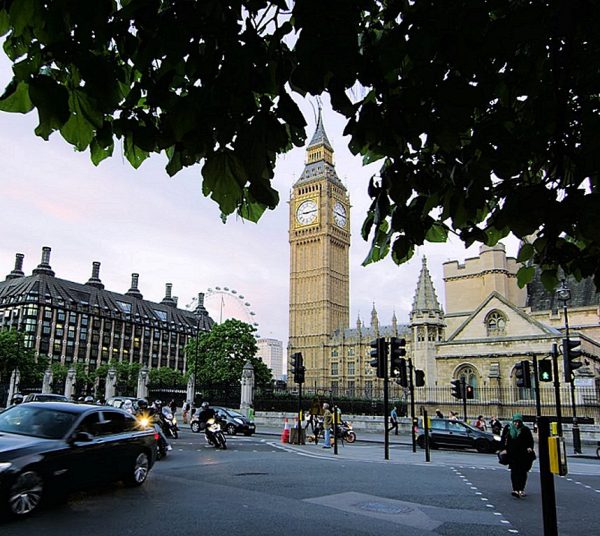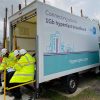Cross Party UK MPs Criticise 2025 Gigabit Broadband Target UPDATE

The DCMS Select Committee of cross-party MPs has today published the results of their inquiry into the Government’s £5bn pledge to ensure that 85%+ of the UK can access a “gigabit-capable” broadband service by 2025 and the role of 5G mobile. Unsurprisingly, they found significant concerns with deliverability.
At present around 96% of the United Kingdom can access a fixed “superfast broadband” network (speeds of 30Mbps+), although over the past few years the Government has gradually switched its focus to fostering “full fibre” (FTTP) and other “gigabit-capable” (1Gbps+ or 1000Mbps+ if you prefer) networks that currently only cover around 34% of premises (here).
Much of this “gigabit” class coverage comes from Fibre-to-the-Premises (FTTP) based infrastructure from Openreach, as well as multiple alternative network ISPs (Summary of Full Fibre Build Progress) and Virgin Media’s hybrid fibre DOCSIS 3.1 network (Virgin’s upgrade of this platform will enable 1Gbps+ download speeds to more than half of all homes by the end of 2021).
Advertisement
On top of all this the Prime Minister, Boris Johnson, has also committed £5bn to help ensure that at least 85%+ of UK premises can access a gigabit-capable connection by the end of 2025 (here), which will primarily target the final 20% of premises (i.e. the hardest to reach rural and some sub-urban areas), where pure commercial investment models tend to fail.
Suffice to say to say that by the end of 2025 it wouldn’t be a massive surprise if the industry alone, mostly using private investment, had already been able to achieve gigabit coverage of around 70-80%. But the as yet unknown quantity in all this is the future impact of the Government’s proposed £5bn plan, which aims to help tackle the remaining gap (plugging that by 2025 was always going to be a tall order).
In keeping with this the Select Committee’s Inquiry was tasked with the job of examining how realistic the 2025 target is, as well as what sort of challenges it might face, what changes might be needed, the impact of COVID-19 and the likely impact upon individuals of the new pledge.
Findings of the Inquiry
The report starts off by noting how the target has changed significantly over the past two years. Under the former PM, Theresa May, the goal was to achieve nationwide coverage of FTTP by the end of 2033, which was considered by many to be viable but still challenging (deploying truly universal full fibre does tend to be a 10-20 year project in most countries – that’s just a reflection of the huge cost and civil engineering challenge).
Advertisement
After that the current PM, Boris Johnson, pulled this forward to 2025, which is a target that was widely regarded as being virtually impossible to achieve. A few months later this was promptly watered down to include other “gigabit-capable” technologies than FTTP, which made it more viable but still highly unlikely to be achieved by 2025. Last month it was revised downward again, this time targeting the new 85%+ goal (i.e. much more realistic).
The new report warns it “would not be acceptable having abandoned one unrealistic target, for the Government to fail to meet a second less ambitious target through lack of effective planning or inadequate investment.” On top of that they also conclude that the original goal of achieving “majority 5G coverage by 2027,” which in fact isn’t even mentioned in the 2019 Conservative Manifesto, was also at risk, given rulings banning the use of equipment from high-risk vendors (e.g. Huawei). MPs warn that the 5G rollout thus risks repeating the current legacy of mobile “not-spots” (something the £1bn SRN hopes to solve).
Julian Knight MP, DCMS Committee Chair, said:
“The Government’s decision to abandon its 2025 gigabit-capable broadband target within weeks of Ministers reassuring us of their commitment to it was a belated recognition that it was unrealistic and unachievable, underlining concerns we’d heard from industry.
Valuable time has been lost, making meeting even the revised-down target a major challenge.
On 5G, the Government’s target to deliver to the majority of the population, rather than the majority of the country, risks repeating the same errors that led to mobile ‘not-spots’ with investors cherry-picking areas of high population and leaving people in remote rural areas without a hope.”
Cllr Mark Hawthorne, Spokesperson for the Local Government Association, said:
“As this report rightly recognises, councils need to have the local powers and adequate funding to help this ambition become a reality across all communities. Many councils are under even greater financial pressure as a result of the pandemic and will struggle to prioritise work to remove barriers to digital roll-out over key statutory services. This could place a significant risk on the Government’s delivery timescales.
The Government needs to fund councils to put in place a local digital champion to help coordinate delivery locally. This would also enable them to recruit extra capacity within highways and planning teams to respond to surges in local roll out activity, such as street works permit requests or planning applications, that take place when a provider commences roll out in a specific area.
We are disappointed at the downgrading of the Government’s 100 per cent target and agree with the Committee that it must announce as soon as possible a revised timeline for reaching the remaining 15 per cent of premises that will not be served with gigabit-capable broadband by 2025.”
For what it’s worth, we see no problem with commercial operators delivering 5G coverage to a “majority” of the UK population by 2027 (even with the Huawei ban), which as above is really a non-target given that such things are easily achievable without any major government intervention (more than 50% can be considered a majority, so it’s a fairly low bar to set) – just look how far 4G has come in the past 7 years since its rollout began (here).
The report then concludes with a series of recommendations, such as demanding that the Government outline how it settled on the new 85%+ target and then requiring them to set a clear goal for when they expect 100% to be achieved (likely to be after 2030). The committee also want to ensure that any deployments use “future proof” technologies (some may view this as taking a more FTTP-only focus) and they remain concerned that £5bn won’t be enough to finish the job.
Advertisement
Broadly speaking, the new report doesn’t really tell us anything that we didn’t already know, it largely just confirms the current state of play. All of this also comes on the same day that the Government has published their Draft Strategy for the £5bn Gigabit Programme, which outlines more detail about how they intend to reach the latest 85%+ target (likely not a coincidence).
The Government has until 22nd February 2021 to respond to today’s select committee report.
Recommendations (In Full)
The Government’s targets and funding for digital connectivity
1. Sticking to unachievable targets benefits no-one, and it was inevitable that the Government would have to abandon its unrealistic manifesto pledge to deliver nationwide gigabit connectivity by 2025. Ministers should be ready to respond openly, in answering questions from members of a select committee, accepting that a target will not be met when they already possess sufficient information to know that it is not going to be achieved. We welcome the fact it has finally listened to concerns, rethought the target and taken a more realistic outlook. However, the time it has taken to do so will have delayed industry, local bodies and consumers receiving the information they need to plan or build a robust investment case. Moreover, given that the previous target had been staunchly defended to us makes us question how much of a say DCMS had in the decision to scrap it, and the extent to which both the new target and its likely implications have been fully considered in consultation with industry.
2. It would not be acceptable having abandoned one unrealistic target, for the Government to fail to meet a second, less ambitious, target through lack of effective planning or inadequate investment. The Government should outline, in its response to this Report if not before, how it settled on the new gigabit-capable broadband target of 85% coverage by 2025, a full assessment of how likely it considers it to be met, and the detail of how it plans to deliver it. The Government should also clearly state its target date by which it expects the remaining 15% of premises to be served with gigabit-capable broadband.
3. The Government’s technology-agnostic approach to securing a nationwide gigabit-capable network makes sense in the context of delivering faster connections to as many premises as possible as quickly as possible. However, the Government must not let it come with a trade-off in performance or longevity: any technologies used to deliver gigabit connectivity must be future-proof. Moreover, fibre will be a significant component of other gigabit-capable technologies, such as 5G, and therefore the challenges of rolling out a truly nationwide full-fibre network must not be underestimated.
4. It is difficult to see how £5 billion will be enough to meet the Government’s aim of delivering gigabit broadband to the hardest-to-reach 20% of premises. Investment in digital infrastructure is too important to be compromised. It is therefore disappointing that over the next four years, the Government will make available only 25% of the £5 billion it had committed to support the roll-out of gigabit-capable broadband to the hardest-to-reach premises. This will undermine the ambition for such premises to receive better connectivity at the same time as other parts of the UK.
5. The Government should outline in its response to this Report, if not before, how the remaining £3.8 billion has been ringfenced and when it expects to make it available for delivering gigabit-capable broadband to the hardest-to-reach properties.
6. There are technical reasons why 5G will not be the silver bullet for delivering gigabit connectivity to rural areas but this will be exacerbated if the roll-out of 5G follows the same commercially-driven pattern as previous generations of mobile technology. Even if roll-out in urban areas means the majority of the population is able to access 5G by 2027, which is by no means assured given the restrictions on the use of Huawei equipment, Government must do more to ensure that rural areas do not get left behind.
7. The Government should complete a formal review of progress towards its targets for gigabit-capable broadband and 5G by the end of 2022 and report back to us on progress.
Demand for gigabit connectivity
8. Ensuring there is sufficient demand for gigabit-capable broadband must not be an afterthought and based on consumer behaviours and take-up of existing technologies, cannot be assumed to be a given. We are concerned that the Government has not given enough priority to this policy area to date and does not fully recognise the potential role that Government could play now. We await the findings of GigaTAG’s work and urge DCMS to act promptly on their recommendations.
Delivering gigabit connectivity at pace
9. Getting the design of the gigabit programme right is absolutely essential, especially as its budget for the next four years will be only 25% of what was expected. Some parts of the country will still get left behind when it comes to the roll-out of gigabit-capable broadband, the consequences of which have been magnified during the COVID-19 outbreak. Ensuring people can work remotely, wherever they live, will spread the economic benefits of digital connectivity to the whole country.
10. The Government should outline in its response to this Report, if not before, what the Spending Review and 85% target mean for its ‘outside-in’ ambition and its strategy for delivering to those semi-urban areas unlikely to benefit from commercial roll-out. Given the centrality of the principle of levelling-up to the Government and its National Infrastructure Strategy, we recommend it continues to prioritise those with worst connectivity.
11. The roll-out of gigabit-capable networks will put considerable strain on local authorities, which are already facing considerable pressures on their budgets. The Government must retain the expertise gained through the superfast programme and ensure local authorities are resourced sufficiently to support the roll-out of gigabit-capable connectivity at pace.
12. We are not convinced that the technology-agnostic approach to delivering gigabit-capable broadband extends much beyond ministerial pronouncements. The Government needs to take a more joined-up approach to fixed and mobile telecoms policy, especially when it comes to interventions for the hardest-to-reach properties. In its response to this Report, if not before, DCMS should clearly outline what technology-neutrality will mean in the gigabit programme and how it will be delivered.
13. We are concerned that Ofcom has significant catching up to do for its regulatory regime to deliver the Government’s goals and protect consumers. The regulatory framework proposed in the Wholesale Fixed Telecoms Market Review has the potential to undermine the Government’s £5 billion subsidy for hard-to-reach areas and does not accurately reflect the competitive landscape for fixed telecoms. Consideration will also have to be given to the potential impact of the Government’s new target and spending plans. We expect Ofcom to address these issues in its final statement on the Wholesale Fixed Telecoms Market Review 2021–26 and to write to us explicitly outlining how it has done so.
14. Judging by the legislative measures to date, the scale of the Government’s efforts to tackle the most serious barriers to roll-out does not match the scale of its ambition for gigabit connectivity. Despite the challenges of the 2025 target, the Government intends to “wait and see” about complex problems such as third-party access instead of addressing them as a matter of priority. We recommend that the Government reforms the wayleave regime for telecommunications infrastructure in the next Parliamentary session to address unresponsive and/or uncooperative landlords in urban and rural settings, including third-party land.
15. Again, the Government’s ‘wait and see’ approach to ensuring sufficient numbers of engineers does not reflect the scale of the infrastructure and industry challenge to meet its targets for rolling out nationwide full fibre. The Minister’s assertion that the UK has enough engineers for its current need contradicts what we have been told by industry and is scant reassurance when build rates need to increase four-fold to reach 85% of the country by 2025. We encourage the Government to introduce time-limited visa solutions that enable engineers from the EU to address the industry’s labour needs until such time that these can be met by the domestic workforce.
16. Industry’s calls for regulatory and business rate reform, as well as removing barriers to roll-out, will not come as any surprise to Ministers; however, these long-standing policy recommendations demonstrate a gap between the Government’s ambition and the action it has taken to date. Even getting to 85% gigabit-capable coverage by 2025 will require a rapid rise in build rates and for industry to roll-out just as fast as under previous targets. Urgent action to address these barriers that stand in the way of them doing so is therefore as important as ever.
UPDATE 8:27am
Some comments are coming in.
Andrew Glover, ISPA Chair, said:
“ISPA was pleased to support the Committee inquiry and agrees with many of its findings. The Committee is right to point out that even getting to 85% by 2025 remains a challenging target and that urgent action is needed to tackle the barriers that still stand in the way of the accelerated build-rates that Government envisages.
This includes comprehensive wayleave reform, short and long-term access to talent, clarity about businesses rates and clarity about how and when Government intends to make available 75% of public funding that as of now remains un-allocated.
Without action to address these challenges, even the 85% target might be more fantasy than reality.”
Michael Armitage, CEO of Broadway Partners, said:
“The DCMS committee’s findings that the government may not even meet its watered down target is worrying and action must be taken. Almost 190,000 homes are still without ‘decent’ broadband and we are lagging behind the rest of Europe with full fibre connection. If this year has shown us anything, it is just how important staying connected is, not only for our economy, but for our personal lives. The digital divide is a real issue and we can’t afford to let it get worse.
While the government’s reduced target of delivering gigabit-capable connectivity to 85% of the UK by 2025 is still ambitious, it is achievable. For it to happen, the UK must re-evaluate its method and approach. This will ultimately rely on a combination of activating the energy of smaller suppliers, building truly collaborative partnerships across the public and private sectors and harnessing the power of fibre and 5G. In other words, we need to build back better – if necessary, by ditching the old methods of intervention.”
Mark is a professional technology writer, IT consultant and computer engineer from Dorset (England), he also founded ISPreview in 1999 and enjoys analysing the latest telecoms and broadband developments. Find me on X (Twitter), Mastodon, Facebook, BlueSky, Threads.net and Linkedin.
« Draft Strategy for £5bn UK Gigabit Broadband Rollout Published UPDATE























































What was it that Our Dear Leader describes as “Laughably unambitious”……..
What’s laughable ambitious is the cost of sub-par broadband in the UK. If anything that deserves a public inquiry.
Was there any comment on the distribution of some of the £5bn to Scotland?
Will it be allocated to the R100 project (whilst making sure it doesn’t just become a subsidy for this Scottish project) or will it be an additional layer of activity?
BDUK are still negotiating the approach for N.Ireland, Scotland and Wales, so that has yet to be decided. In any case R100 is now set and running, so any funding from the new gigabit programme would apply to future contracts and not existing ones.
I’m truly shocked that Boris Johnson does not appear to be delivering on the promises he’s made.
No you’re not. 🙂 You’re just expecting a u-turn aren’t you? I’m surprised Bob and vick haven’t re-released “Dizzy” with Boris in the video for Christmas.
good news, the contractors are in my village putting fibre in the main ducts …. so there is hope
Care to share which village?
Much binding in the Marsh….